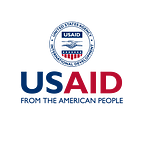Helping Babies Breathe
How an innovative approach and a decade of partnership have helped save newborn lives
Meet Tayeeba: a bright, smiling 8-year-old from Shadipur, Bangladesh. She spends her days playing with her family and neighbors, like many other children across the world.
However, Tayeeba’s first moments of life were not so carefree. When her mom Rikta gave birth to her in 2012, attending midwife Sakhina quickly realized Tayeeba was not breathing.
“I carried out the delivery, but the baby didn’t cry,” Sakhina said. “She wasn’t making any sound.”
Thankfully, Sakhina had been trained two weeks earlier by the Helping Babies Breathe program and jumped into action to save Tayeeba’s life. “I quickly cleaned up her mouth using the penguin sucker, but to no avail. I then massaged her back, but the baby still didn’t make any sound. Then I got my bag and mask and gave the baby artificial breathing 40 times, and finally she started to cry.”
Sakhina was able to help Tayeeba take her first breaths by providing ventilation with a bag and mask — exactly as she had practiced in the Helping Babies Breathe workshop.
A Simple Solution to Save Lives
Tayeeba was one of the first newborns saved by the Helping Babies Breathe Global Development Alliance. This public-private partnership, which USAID helped launch 10 years ago, created a global movement for preventing newborn deaths from birth asphyxia — a medical condition that occurs when a baby doesn’t receive enough oxygen before, during, or immediately after birth.
When the partnership was founded in 2010, birth asphyxia was one of the leading causes of newborn deaths and a deeply entrenched problem in many countries. USAID and Alliance partners — the American Academy of Pediatrics, Laerdal Global Health, Save the Children, the National Institute of Child Health and Human Development, and others — worked together to raise awareness and demystify what was once a complex intervention: newborn resuscitation.
Many babies are born able to breathe on their own, but every year an estimated 10 million newborns globally need basic breathing assistance via simple stimulation techniques, like drying and rubbing or ventilation with a bag and mask.
A birth attendant who takes action to stimulate a newborn baby’s breathing within 60 seconds of birth, known as “the golden minute,” can save the newborn’s life.
Over the past 10 years, USAID and Alliance partners have scaled Helping Babies Breathe in more than 80 countries, reaching health centers, clinics, and professional schools. About 1 million birth attendants have received low-cost, evidence-based training for newborn resuscitation techniques through the innovative educational materials, hands-on learning equipment, and peer-to-peer teaching characteristic of the Helping Babies Breathe curriculum.
Designed for use in resource-limited settings, these techniques can reduce fresh stillbirths and first-day newborn deaths by about 30 percent.
USAID and partners aim to have at least one person skilled in newborn resuscitation present at the birth of every baby, no matter where they are born. Resuscitation is now a core part of our newborn health programs in every country where we work and our country partners have embedded the intervention into national health plans, budgets, and systems.
After initial catalytic support, USAID ended its direct role in the Helping Babies Breathe Global Development Alliance, given the transformative success, implementing partner continuation, and ownership at the country level. Although there’s still much work to do to ensure newborns survive and thrive — from their first minute to their first month of life — many countries are now equipped with the lifesaving tools to help newborns breathe and prevent deaths due to asphyxia.
This year, as we celebrate its 10th anniversary, Helping Babies Breathe remains one of the most visible and widely recognized global health initiatives for saving newborn lives. We convey our deepest gratitude to all who have helped make this life-saving approach such a success.
Learn more about USAID’s work to prevent maternal, newborn, and child deaths with our 2020 Acting on the Call report.
About the Author
Sydney Perlotto is a Communications Analyst in USAID’s Bureau for Global Health.
